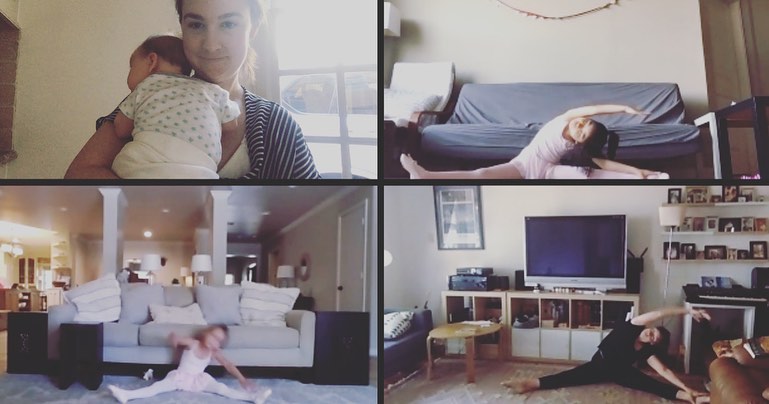I don’t need to tell you that we as a society have gone through massive and abrupt changes in recent months. I would like to take this opportunity to notice and celebrate the ways that dancers and choreographers – always nimble, always flexible – have created, discovered, expanded, adapted, worked and reworked formats for creating and sharing dance in this time of uncertainty. In the role of artist, dancers and choreographers both lead and reflect our responses to events and our shifting perspectives. The art of dance has held an important place in quarantine culture since it began, becoming uniquely popular as we stay home to stay safe.
By the end of March, publications like the LA Times and Vanity Fair were reporting on online dance classes and dance parties, while industry journals like Dance Enthusiast had designated space for social distance dance content. Dance companies responded with choreography and editing that allowed dancers to dance alone together. On March 29, the Martha Graham Dance Company posted “Sharing the Light,” excerpts from Graham’s dance Acts of Light performed by company members in domestic and outdoor spaces. In format, “Sharing the Light” is reminiscent of the gorgeous dance films of Mitchell Rose, specifically 2016’s “Exquisite Corps” and 2019’s “And So Say All of Us,” where dancer-choreographers are connected by movement, music, and editing while dancing worlds apart. It is an adaptable format. For example, it is used adorably and with feeling by YouTubers Dylan Arredando in a series of Quarantine Movement Chain Letters, and Prischepov TV to present the Quarantango.
Dance educators were quick to adapt to virtual dance. Within days of cities declaring lockdown, studios big and small moved their classes online, and we all found the most Zoom-able corner of our house and turned it into a dance studio. Suddenly, anyone with an internet connection could study dance with the schools of Alvin Ailey, Merce Cunningham, Gibney Dance, and the aforementioned Martha Graham. Smaller local and regional studios without the resources of these legends have not had to navigate digital dance instruction alone. The wonderful people at the National Dance Education Organization began sharing resources for on-line dance education on March 24 and, as of today, have produced and shared fifteen free webinars on the subject. Luna Dance Institute in Berkeley, CA, hosts weekly practitioner exchanges that gather dance leadership from around the country to discuss concerns and solutions in virtual dance education.
Our dance community has not missed a step (pun intended!) in it’s goal to provide quality dance training, and has even found exciting new possibilities in the online format. Student dancers are having a crash course in dance-for-camera as they consider framing, space, and editing as part of their “digital studio” skills. Pre-recorded classes give dancers a chance to look carefully, to slow down the movement, and to revisit it at will. Holding classes in the home allows the entire family to participate in dance education, and interacting with studios via social media provides a different, sometimes broader, sometimes deeper relationship between a dancer’s family and their instructors. The domestic/public spheres are being broken down and renegotiated, as are so many parts of the larger culture, offering new possibilities as old practices are eliminated or put on hold. We are learning together, and together we are remaking our world. That’s not hyperbole. That’s bodies, in motion, making choices.
Please share online dance resources – instructional and/or just fun to watch – in the comments. Show us part of your world!

